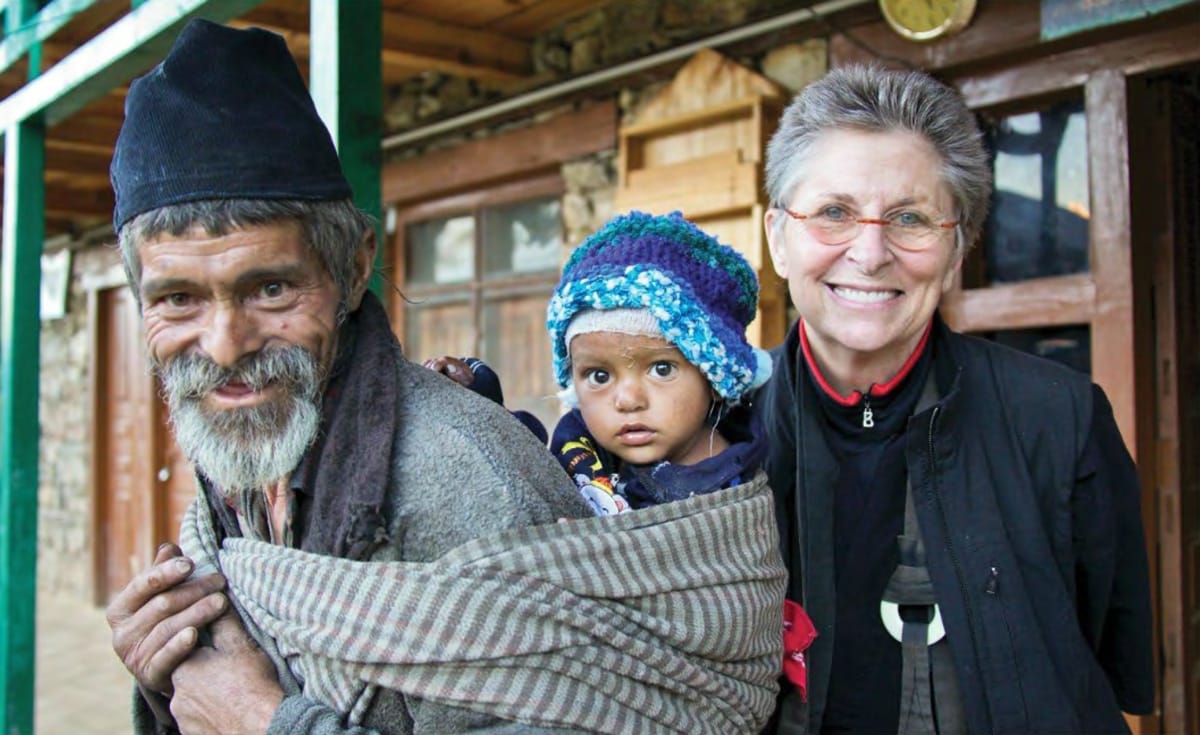In the early morning, a weary man dressed in tattered clothes walked into a rural Himalayan mountain hospital with a grimy, reeking bundle in his arms. I was in Nepal serving in one of Upaya Zen Center’s Nomads Clinics. The doctor who was heading up our team approached the man, who wordlessly began to unwrap this large knot of rancid rags to reveal inside a young child who was severely burned on her head, arms, back, and chest.
When we examined the little girl, we saw that some of her burns were filled with writhing white maggots and other burn sites were badly infected. The man was a mute, but his eyes conveyed terrible sadness and deep resignation. Our intercultural medical team immediately mobilized, and the child was taken into a small wooden room, where local nurses and our Western team began to tend to her terrible wounds.
From the beginning, I was not only observing the clinicians and child but also my own mental and physical state. I had worked as a consultant in the burn unit at the University of Miami School of Medicine in the 1970s, and I was aware from my past experience of how painful debridement is. This is a process that entails the removal of infected or dead tissue from a wound site, and the clinicians were doing a massive and masterful job on this child.
My heart went out to the little girl as her burns were being cleaned. Her crying was reflected in her father’s distressed eyes. In the midst of the procedure, the child seemed to have slipped into my skin. I realized that I was overwhelmed by my perception of her pain—my heart rate had increased, my skin had grown cold and clammy, and my breath had quickened. I realized that my identification with the child’s experience had gone out of control, and if I were to stay in the room, I needed to shift from hyper-attunement to care, from empathy to compassion.
This was an example of the kind of empathic distress, secondary trauma, and moral suffering that caregivers often experience when interacting with those who are suffering. GRACE is a process I created to move out of such distress and into grounded and principled compassion.
The mnemonic for GRACE is this:
Gathering attention
Recalling intention
Attuning to self/other
Considering what will serve
Engaging and ending
Gather your attention by pausing, taking an in-breath, and giving yourself time to get grounded. On your exhale, invite yourself to be present in a place of stability in your body. You can also bring your attention to a phrase or an object. Use this moment of gathering your attention to interrupt your assumptions and expectations and to allow yourself to relax and be present.
Recall that your intention is to serve others, act with integrity, and preserve the integrity of others. Your motivation keeps you on track, morally grounded, and connected to your highest values.
Attune to self by first noticing what’s going on in your own body, heart, and mind. Notice whatever biases might be present and shift your perspective accordingly. Then attune to the other person and what they might be experiencing physically, emotionally, and mentally.
Consider what will really serve by letting assumptions go and insights arise. As the encounter with the other person unfolds, notice what he or she might be offering in this moment. What are you sensing, seeing, learning? Ask yourself, what will really serve here? Draw on your expertise, knowledge, and experience, and at the same time, be open to seeing things in a fresh way. Don’t jump to conclusions too quickly.
Engage, enact ethically, and then end the interaction and allow for emergence of the next step. Compassionate action emerges from the field of openness, connection, and discernment you have cocreated with the other person. Draw on your expertise, intuition, and insight and look for common ground consistent with your values and supportive of mutual integrity.
Catching myself in a distressing and fragile situation as I watched the young Nepali girl in pain, I shifted my attention to the simple sensation of my feet on the floor. I took an in-breath and allowed myself to get grounded. I then recalled briefly that I was there to serve, as were all those who were working on the child. I kept my awareness on my situation and stayed grounded. When my heart rate slowed and my head cleared, I lent my attention again to the child. All this occurred in a matter of a few seconds.
I recognized that though this was a very hard thing for this child to go through (and for the clinicians as well), the doctors and nurses and aides were saving the child’s life.
As soon as I had this thought, I was flooded with warmth and a deep sense of gratitude that the man had brought his daughter to the clinic and that our team, including these compassionate Nepali nurses, were there to keep this little girl alive. I took in the whole room and sent love and strength to all who were there, including the child.
I was to see her and her father hours later, as he departed the clinic with her in his arms. Her face was bright and relaxed, and her eyes were luminous, as were the eyes of her father. Years had dropped from his face. I lightly hugged them both, bowed, and saw in her father’s hands the medicines that would help her to continue to heal.
After I watched him moving carefully down the trail with his daughter held close, I had the thought that if this was the only person who was aided by our work, the months of preparation for Upaya’s Nomads Clinic were worth it. Then I dropped that thought quickly. It was “extra.”

